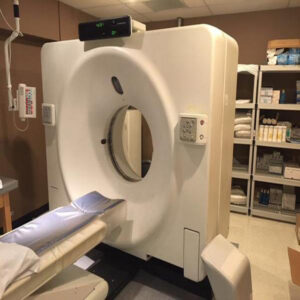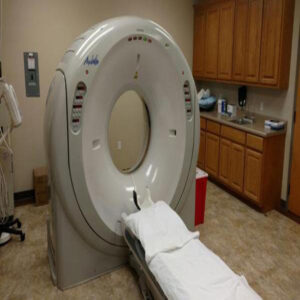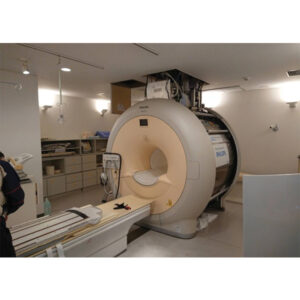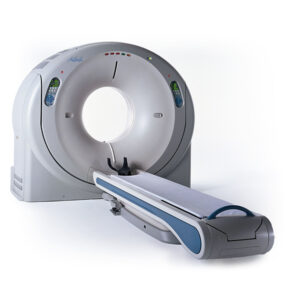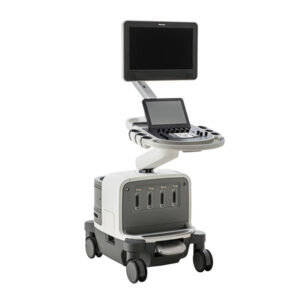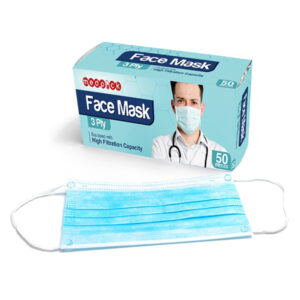Philips Lumify Ultrasound Machine
MPIN: MP11789
Sign in to view priceThe Philips Lumify is the newest app-based ultrasound solution on your compatible smart device, such as Android based smart device, galaxy tab.
Ask for Quote
Philips Lumify Review:
The Philips Lumify is the newest app-based ultrasound solution on your compatible smart device, such as Android based smart device, galaxy tab. The way to use the Philips Lumify is simple. A user downloads the Philips Lumify mobile app to the smart device, and connects the Philips Lumify probe connector to your compatible smart device. The Philips Lumify probe connector is more unique than any conventional ultrasound probe connector, micro USB type. So you don’t need to have a dedicated system to operate your handheld ultrasound.
The Philips Lumify supports three transducer types – Convex(C5-2), Linear(L12-4), and Phased Array(S4-1). The applications of the Philips Lumify are extended: cardiac, abdominal with lung, Ob/GYn, FAST exam, soft tissue, musculoskeletal, lung, and vascular scanning. With its mobility and flexibility, the Philips Lumify can bring wide mobile ultrasound capacity in your various clinical environments as a personalized point-of-care solution. The Philips Lumify mobile ultrasound enables you to quickly send and share images, notes, and diagnostic data via e-mail, DICOM to PACS, a shared network, or a local directory.
The Philips Lumify is a mobile app based ultrasound solution; nevertheless, it does not miss high image optimization technology such as SonoCT real-time compounding imaging, Tissue Harmonic Imaging, XRES, adaptive imaging processing, and AutoSCAN intelligent optimization, which are core Philips imaging technologies. Available imaging modes of the Philips Lumify include 2D mode, M-mode, and Color Doppler mode. Pulsed wave Doppler is not supported. With its intuitive interface of a smart device and UI design of the mobile app, the Philips Lumify reduces the learning curve of novice users.
Probes
Philips Lumify Probes/Transducers:
C5-2 curved array:
• Weight: 135g / 4.8 oz (without cable)
• 128 elements
• 2 to 5 MHz extended operating frequency range
• 67.5 degree field of view
• Supports 2D, color Doppler, and Tissue Harmonic Imaging
• Lightweight replaceable USB cable
L12-4 linear array:
• Weight: 108g / 3.8 oz (without cable)
• 128 elements
• 4 to 12 MHz extended operating frequency range
• 34.5mm field of view
• Supports 2D, color Doppler, and Tissue Harmonic Imaging
• Lightweight replaceable USB cable
S4-1 sector/phased array:
• Weight: 96g / 3.4 oz (without cable)
• 64 elements
• 1 to 4 MHz extended operating frequency range
• 90 degree field of view
• Supports 2D, color Doppler, and Tissue Harmonic Imaging
• Lightweight replaceable USB cable
Features
- Tissue Harmonic Imaging :Yes
- Spatial Compounding(=CrossXbeam) :Yes
- Speckle Reduction (=SRI) :Yes
- Auto Image Opt(B mode):No
- Auto Image Opt(Doppler):No
- Write Zoom:No
- Triplex Mode:No
- Needle Enhancement or Needle Recognition:No
- Auto NT Measurement (=Sono NT):No
- Auto Follicle 2D Measurement:No
- Auto Follicle 3D Measurement:No
- Auto IMT:No
- Auto IMT (Real Time):No
- Automated B/M/D Measurement:No
- Automated LH Measurement(Automated Function Imaging(AFI), Cardiac Motion Quantification(CMQ), or Auto EF(Ejection Fraction):No
- Live Dual (B/BC) Mode:No
- SmartExam or Scan Assistant:No
- Fusion:No
- Raw Data File:No
- Flexible Report:Yes
- Barcode Reader:Yes
- Gel Warmer:No
Transducers
- Convex (1~6Mhz):Yes
- Convex (2~9Mhz):No
- Single Crystal Convex (1~6Mhz):No
- Single Crystal Convex (2~9Mhz):No
- 2D Arrary 3D Convex (1~6Mhz):No
- Micro Convex (5~8Mhz):No
- Single Crystal Endocavity_Straight Type (3~10Mhz):No
- Endocavity_Curved Type (5~8Mhz):No
- 3D Convex (2~6Mhz):No
- 3D Convex Light Weight (2~7Mhz):No
- 3D Endocavity (3~10Mhz):No
- 3D Micro Convex (3~9Mhz):No
- 3D Linear (4~18Mhz):No
- Linear (>14Mhz):No
- Linear (3~12Mhz):Yes
- Linear (<9Mhz):No
- Single Crystal Linear (>14Mhz):No
- Single Crystal Linear (3~12Mhz):No
- Single Crystal Linear (<9Mhz):No
- Linear 50mm:No
- Linear 25mm:No
- Hockey stick (<13Mhz):No
- Hockey stick (>13Mhz):No
- T or L shape Intra Operative:No
- Phased Array_Adult (1~5Mhz):Yes
- Single Crystal Phased Array_Adult (1~5Mhz):No
- 2D Arrary 3D Phased Array (1~5Mhz):No
- Phased Array_Pediatric (3~8hz):No
- Single Crystal Phased Array_Pediatric (3~8hz):No
- Phased Array_Neonate (4~12Mhz):No
- ICE (Intracardiac Echo Cardiography):No
- TEE_Adult (3-7Mhz):No
- TEE_Pediatric (3~7Mhz):No
- 2D Array 3D TEE (2~7Mhz):No
- Pencil CW (2Mhz):No
- Pencil CW (5 or 6Mhz):No
Imaging Modes
- 2D, M mode:Yes
- M-color Flow Mode:Yes
- Anatomical M-mode:No
- Trapezoidal Mode:No
- Color, Power Angio, Pulse Wave Doppler:Yes(Color)
- Bi-directional Power (=HD FLOW):No
- SCW Doppler:No
- Tissue Doppler(Velocity) Imaging:No
- Freehand 3D:No
- Live 3/4D OB/GYN:No
- HD Live:No
- STIC (Spatio-Temporal Image Correlation):No
- Live 3D Echo:No
- Stress Echo:No
- Strain and Strain Rate (Cardiac):No
- B Flow:No
- Panoramic Imaging (=Logiq view):No
- Contrast Imaging – Cardiac:No
- Contrast Imaging – General Imaging:No
- Strain-based Elastography:No
- Shear Wave Elastography:No
Applications
- Abdominal:Yes
- Women’s Health Care (GYN & Breast):Yes
- OB:Yes
- Fetal Echo:No
- Vascular:Yes
- TCD(Transcranial):No
- Small Parts (Breast, Thyroid, Testis…):Yes
- MSK/Anesthesiology:Yes
- Pediatrics:No
- Urology (Renal, Prostate…):No
- Echocardiography_Adult:Yes
- Interventional Cardiology:No
- Echocardiography_Pediatric:No
- Echocardiography_Neonate:No
- Stress Echocardiography:No
- Transesophageal Echo_Adult:No
- Transesophageal Echo_Pediatric:No
- Internal Medicine w/ Shared Service:No
- Surgury:No
- Interventional Radiology:No
- Contrast Imaging _ General Imaging (Low MI):No
- Contrast Imaging _ Cardiac (High or Low MI):No
- Bowel Imaging:No
- Strain Elastography:No
- Shear Wave Elastography:No
Specification
System Overview
- Year Launched:2015
- Estimated Market Price ($):Economy
- Monitor (inch):5.5″ to 18″
- Tilt/Rotate Adjustable Monitor:No
- Monitor Resolution:2560*1600
- Image Size Resolution:
- Touch Screen (Inch):Yes
- Trackball or Trackpad: Touch Screen
- CP Back-Lighting:
- Weight:N/A
- Probe Ports:1
- Battery:Yes (Standard)
- Boot-Up Time:less than 10 sec
- Sleep Mode (Quick Start):Yes
- Maximum Depth of Field:30cm
- Minimum Depth of Field:
- Cart (HCU):Yes
- Independent Steer & Lockable Wheels:N/A
Connectivity
- DICOM 3.0:Yes
- DICOM SR_Cardiac:No
- DICOM SR_Vascular :No
- DICOM SR_OB/GYN:No
- JPEG, WMV, & AVI:Yes
- USB:Yes
- HDD/SDD:No
- DVD/CD RW:No
- Wireless LAN:Yes
Shipping Policy
Orders made at Medpick are initiated and processed for shipment upon receipt of request from the customer. Please note that our Shipping Services (Fee, Transportation, Loss or Damage of any shipment, etc.) are in accordance with the Seller\'s terms of Shipment.
Refund Policy
Please refer to Medpick Return Policy.
Cancellation / Return / Exchange Policy
Please refer to Medpick Return Policy.
 REGISTER
REGISTER
 SIGN IN
SIGN IN


